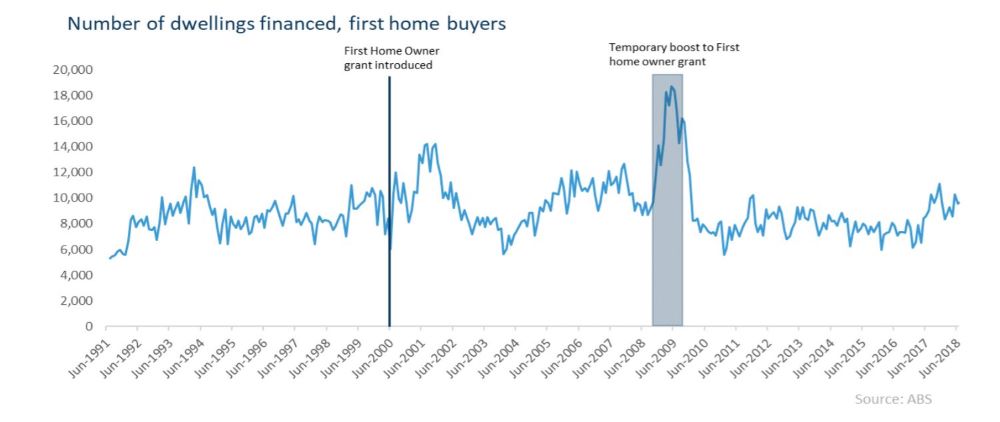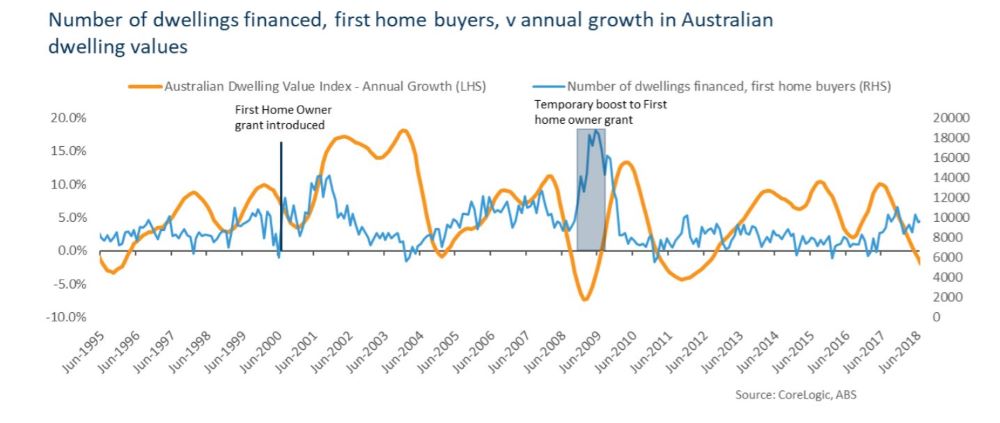The Homebuilder scheme and the 'vacuum effect'
Contact
The Homebuilder scheme and the 'vacuum effect'
Eliza Owen of CoreLogic outlines the implications of the vacuum effect on the HomeBuilder scheme.
While the announcement of the HomeBuilder stimulus from the federal government in early June has been met with a mixture of excitement and criticism, Eliza Owen, Head of Research Australia at CoreLogic explains the vacuum effect.
Firstly looking at the scheme it grants $25,000 dollars for new home builds and renovations where:
- The recipient is an owner occupier;
- The recipient earns no more than $125,000 per annum as a single applicant or $200,000 for a couple;
- The contract is signed between June 4 and December 31; and
- Construction commences within 3 months of the contract date
For renovations, the existing property value must be no more than $1.5 million, and the renovation must be worth between $150,000 and $750,000.
For new builds, the house and land value must not exceed $750,000.
"While potential home owners are likely to be keen to take advantage of the scheme, many have noted that the policy largely creates stimulus for those that were planning to build and renovate anyway," said Ms Owen.
"So instead of creating additional demand for construction work, it may just bring construction forward.
"This side-effect from housing stimulus has actually been seen before – and it has a name: a vacuum effect."
What is a vacuum effect?
Secondly, a vacuum effect describes housing stimulus bringing forward a planned decision to purchase property.
It reflects a surge in buyer activity soon after housing grants are made available, and a significant drop in activity thereafter.
The implication is that rather than stimulating sustained, new demand, stimulus is simply bringing forward activity to a certain date, where it would likely have occurred over time anyway.
"The phenomenon is prominent around the first home owner grant in 2000," said Ms Owen.
"This was a $7,000 grant, designed to soften the blow for first home buyers around an introduction of the GST.
"The ‘boost’ to the first home owner grant, which was a temporary, additional $7-14,000 grant in the wake of the Global Financial Crisis, showed a similar outcome.
The image above shows the number of first home buyer loans secured each month off the back of the introduction of these policies.
"Despite the first home owner grant being in place since 2000, its uptake is concentrated up to November 2001," said Ms Owen.
"Following this, first home buyer participation fell away between 2002 and 2004.
"It is also evident around the first home owner grant ‘boost’, where the number of loans secured began to fall away before the program ended.
However in both of these instances, It is worth noting that any ‘vacuum’ effect here was likely compounded by a strong surge in dwelling values, which is when first home buyer participation is typically stunted due to affordability constraints."
The inversion between first home buyer loan volumes and dwelling price increases is shown in the graph above.
"The implication for the HomeBuilder scheme is that rather than creating additional demand for property purchases and renovations, the scheme would just bring forward works that were already planned," said Ms Owen.
"This is amplified by the timeframes of the HomeBuilder scheme.
"The kind of planning and financing that needs to be organised for a six-figure renovation means that it would largely be taken up by those who have already started the process.
"Similarly for home owners, and first home buyers in particular, those looking to commit to a property purchase within the next 6 months would already have been saving a deposit and primed to buy."
Ms Owen did say, however, where this policy may create additional construction lies in the fact that it is pivoting decision making from established property to new housing, likely to be skewed towards house and land projects.
"The HomeBuilder package may be limited in its ability to deliver new construction work, because it relies on decisions to purchase and renovate property in a highly uncertain economic climate," said Ms Owen.
"This is one of the reasons consensus is mounting around social housing being a more efficient use of government expenditure on housing, because it guarantees the upgrade and building of homes through direct expenditure."
Similar to this:
Property industry responds to Government housing stimulus







